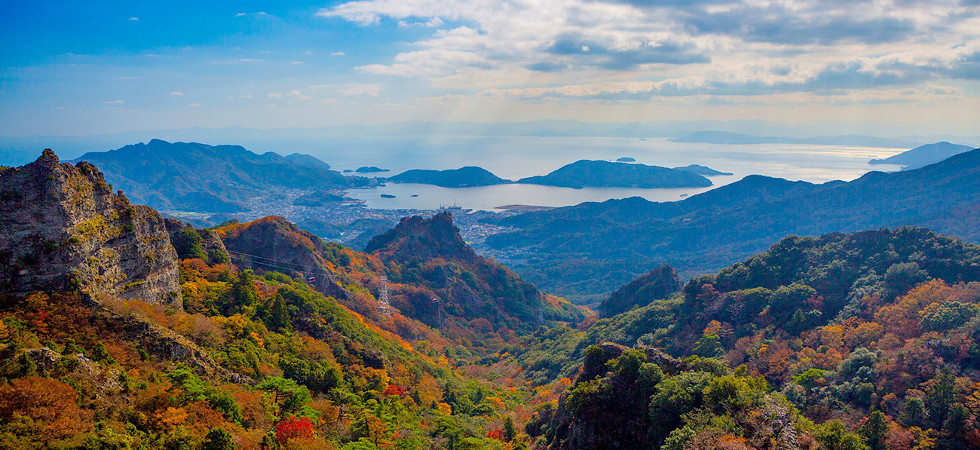Known for its unparalleled beauty Setouchi offers tranquil waters, sandy beaches, pine groves and rice paddy fields across its 3,000 islands scattered in blue waters.
Setouchi, meaning ‘Seto Inland Sea’, encompasses seven prefectures on two separate islands. Shikoku Island consists of Ehime, Kagawa and Tokushima prefectures whilst Honshu Island, the main island, consists of Hiroshima, Hyogo, Okayama and Yamaguchi prefectures.
The Setouchi Art Triennale festival is taking place this year resulting in the islands hosting even more fantastic works of art for art lovers to relish.
Enjoy island hopping around five of the Seto Inland Sea islands and embark on a journey satisfying old and new traditions, viewing Japanese art and eating sensational seafood all paired with Japanese quirkiness making for an unforgettable trip.
Each island holds its own unique scenery and culture offering diversity to those who visit, here is a suggested guide to eastern island hopping in Setouchi:
1 – Produce, Film Sets and Adventure – Shodoshima Island

Shodoshima is part of the Kagawa Prefecture and stands at being the second largest island in the Seto Inland Sea. It is the largest island involved in the Setouchi Art Triennale festival with a lot to offer. It is famous for its olives, soy sauce and as the setting for the Twenty-Four Eyes anti-war novel and film written by Sakae Ysuboi. The movie set reconstructed an entire village of which all buildings can be entered including ones that have transformed into working restaurants, shops and small museums.
Shodoshima has a lot to offer with its stunning beaches, coastal sceneries and mountainous interiors. Those looking for an adventure can explore the spectacular Kankakei Gorge. Get breath-taking views along the ropeway running the length of the gorge. At the top, walk around the observation deck offering a 360-degree panoramic view across the Seto Inland Sea. There are two hiking trails between the two ropeway stations, discover natural beauties and wildlife deep in the forests on the island later, earning yourself a rest on the beach. Kankakei Gorge is particularly beautiful in the fall showing off incredible autumnal colours.
2 – Learn about ogres and the Seto Inland Sea pirates – Megijima Island
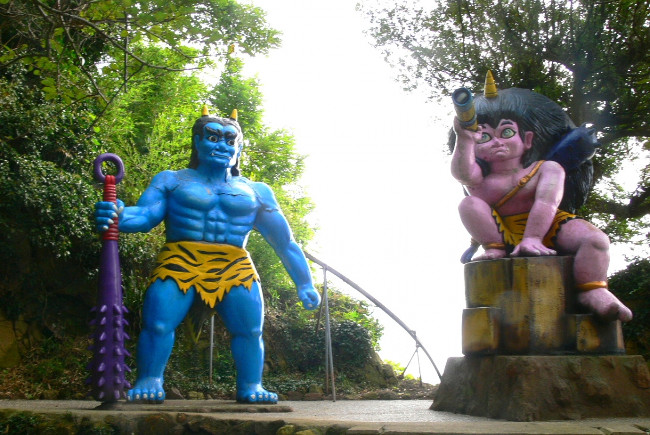
Megijima is another venue involved in the Setouchi Art Triennale festival featuring homes turned into artwork and other incredible art pieces. Located just a 20-minute ride by ferry from Takamatsu Port Megijima is easy to access and a great place to visit around the eastern islands of Seto Inland Sea. Home to just 170 residents the island is nicknamed ‘Island of Ogres’ from Momotaro; a Japanese folktale where a small boy took to the island and fought off its resident ogres.
The island stays true to its nickname with many ogre statues visible when walking around welcoming visitors. Onigashima Caves are believed to be ruins of a pirate stronghold used by the Seto Inland Sea pirates, throughout these caves large cartoon ogre statues are placed telling the Momotaro story. Adding to tradition, the Sumiyoshi Shrine Festival brings in a number of visitors from around the world. The festival is dedicated to the goddess of the island and is viewed as a rare festival preserving ancient convention banning women from participating.
3 – Offering true Japanese villager life – Ogijima island
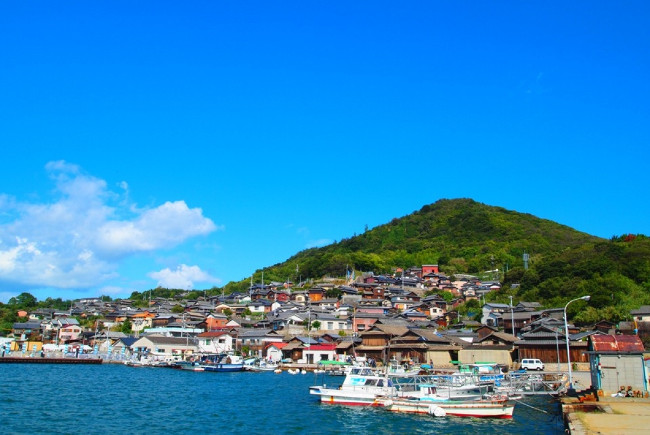
Brother island to Megijima, Ogijima is a 40-minute ferry ride from the Takamatsu port and can be accessed by public or private boat. Home to 150 residents the charming mountain side village on this island overlooks the harbour. The Toyotamahime Shrine is located halfway up the mountain and is often visited by those praying for a safe delivery in childbirth. As a venue to the Setouchi Art Triennale festival approximately 20 both indoor and outdoor installations are be located across the island. The ‘Ogijima Soul’ sculpture was designed and created by Jaume Plensa, it greets visitors at the ferry terminal expressing the soul of the island, combining artwork with small island life.
The ‘Walking Ark’ is another well-known sculpture by Keisuke Yamaguchi and sits on rocky land in the sea. The use of blue and white on the sculpture echoes the aesthetics of the ocean representing the tragedies of Noah’s Ark and the 2011 disasters in Tohoku. This small hilly island offers vast views of the Seto Inland Sea, it is easy to get around with bike rentals available and walking paths everywhere. Immerse yourself in true villager life walking the narrow streets. Note that this island is famous for its cat inhabitants. Cats represent good luck in Japan and can be found everywhere on this island, out populating people. This island is not to be missed amongst the cat lovers.
4 – ‘Art Island’ – Naoshima island
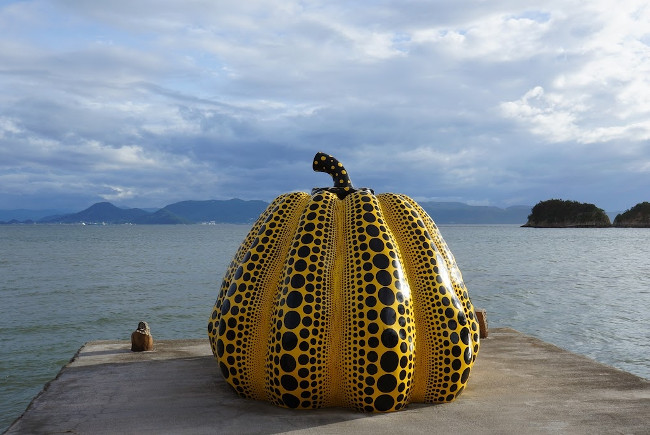
Naoshima is known for being the art-filled island of Setouchi. Covered in art installations and galleries this island is perfect for those who love modern art. Tadao Ando is the main museum designer on the island whilst other installations have been designed by James Turrell, Walter De Maria and Hiroshi Senju. Yayoi Kusama’s Yellow Pumpkin and Red Pumpkin are both seen as one of Japan’s most iconic art installations, it is a must-see when visiting the island.
Later, enter into transformed houses by artists and designers giving a taste for true Japanese art. On the island accommodation is available to suit all; those on a budget can stay in yurts on the beach whilst those who are willing to spend a little more can stay in the luxurious artistic hotel, Benesse House. Benesse House is completed with original works of art on the walls and allows guests after hour access to the Benesse House Museum.
5 – Listen to your heart beat – Teshima island
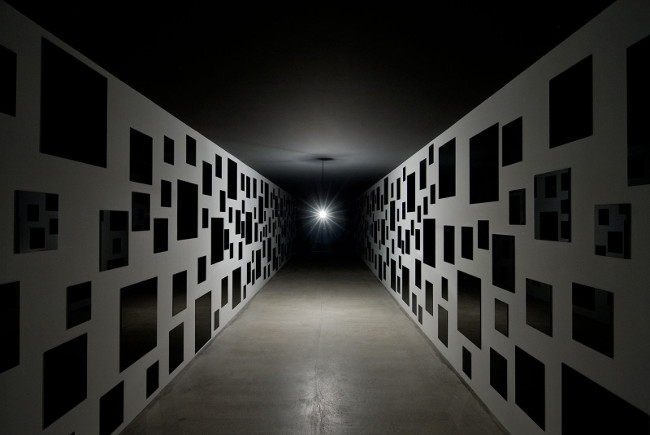
From Naoshima take a 1 hour 15-minute ferry ride to Teshima Island. Again, serving as a venue for the 2019 Setouchi Art Triennale festival its main attraction is the Teshima Art Museum by architect Ryue Nishizawa. The museum contains plenty of intriguing contemporary artworks including Les Archives du Coeur (Heart Archives) by Christain Boltanski which is an additional permanent art installation worth adding to your itinerary. Visitors come here to record their heartbeats and listen to the recorded heartbeats of previous participants. It has been recording heartbeats of people from around the world since 2008.
Not only is this rural island exceptional for its art features, it is a natural marvel covered in 9 hectares of stunning rice terraces and is home to three fishing villages offering a peaceful and relaxed atmosphere. Teshima is also famous for its strawberry production, its strawberries are prized across Japan. There are a number of family-run cafes selling delicious strawberry products from jams and sauces to ice creams and strawberry infused desserts.
Suggested travel route:
- Okayama – Shodoshima 2 hours – train and ferry
- Shodoshima – Takamatsu – 1-hour ferry
- Takamatsu – Megijima- 20 minutes ferry
- Megijima – Ogijima – 20 minutes ferry
- Ogijima – Takamatsu 40 minutes ferry
- Takamatsu – Naoshima – 50 minutes ferry
- Naoshima – Teshima – 1 hour 15-minute ferry
For more information on Setouchi, visit setouchitrip.com












